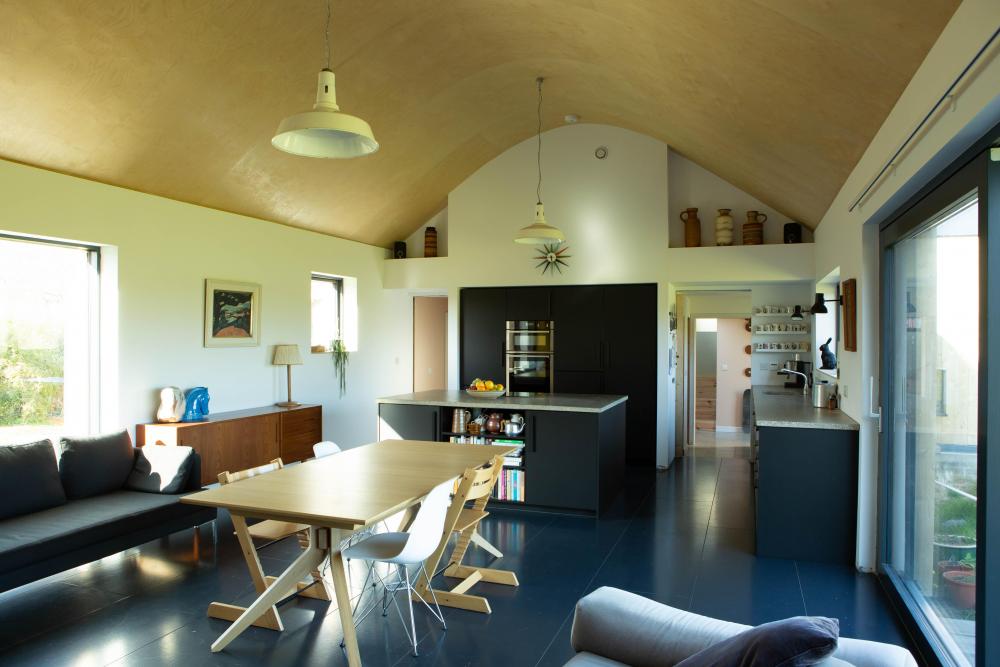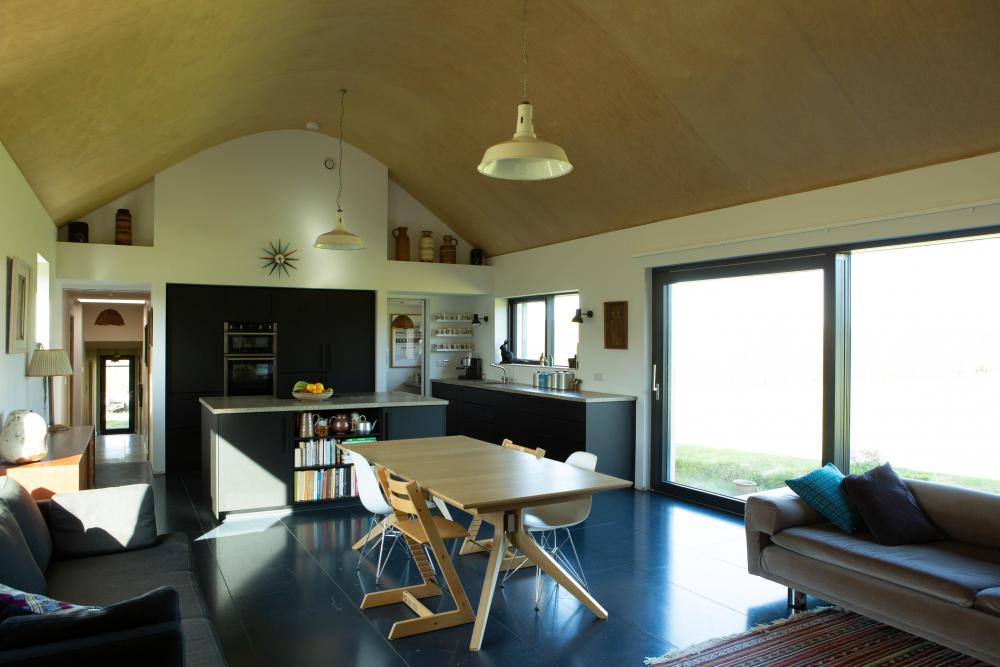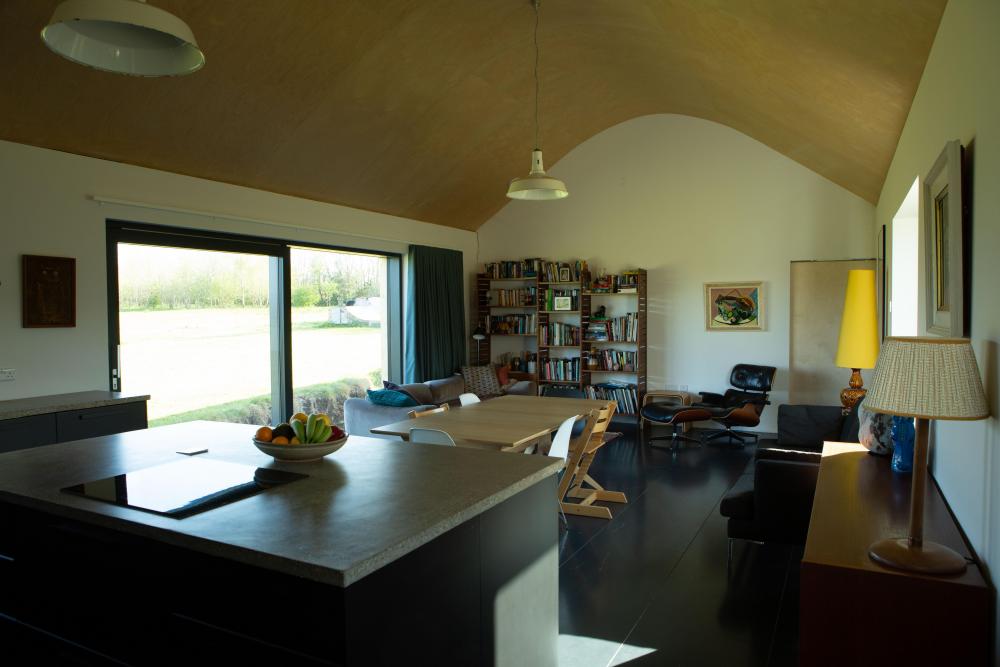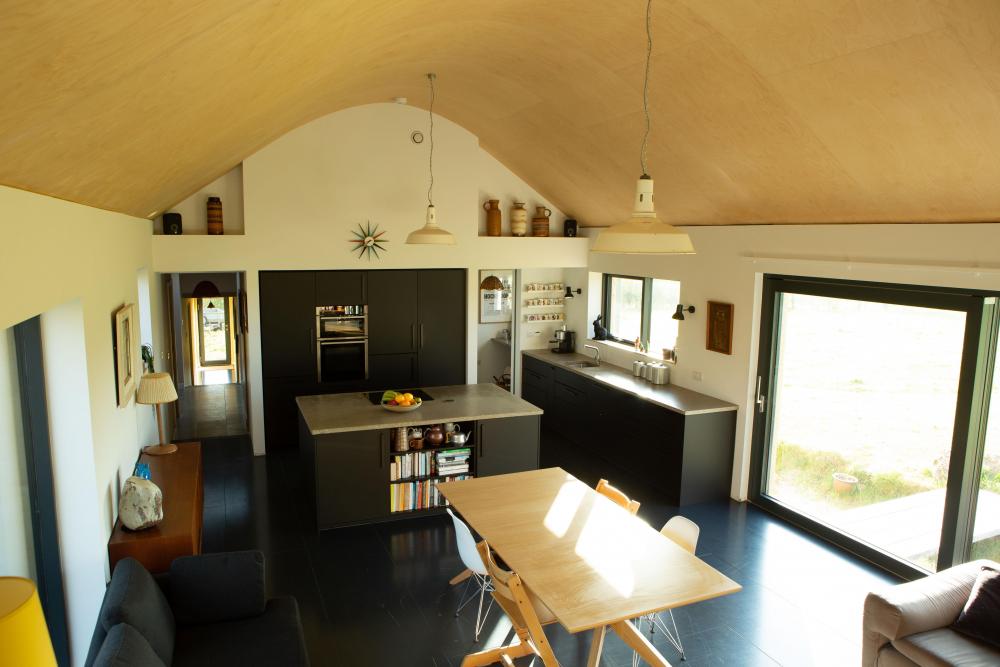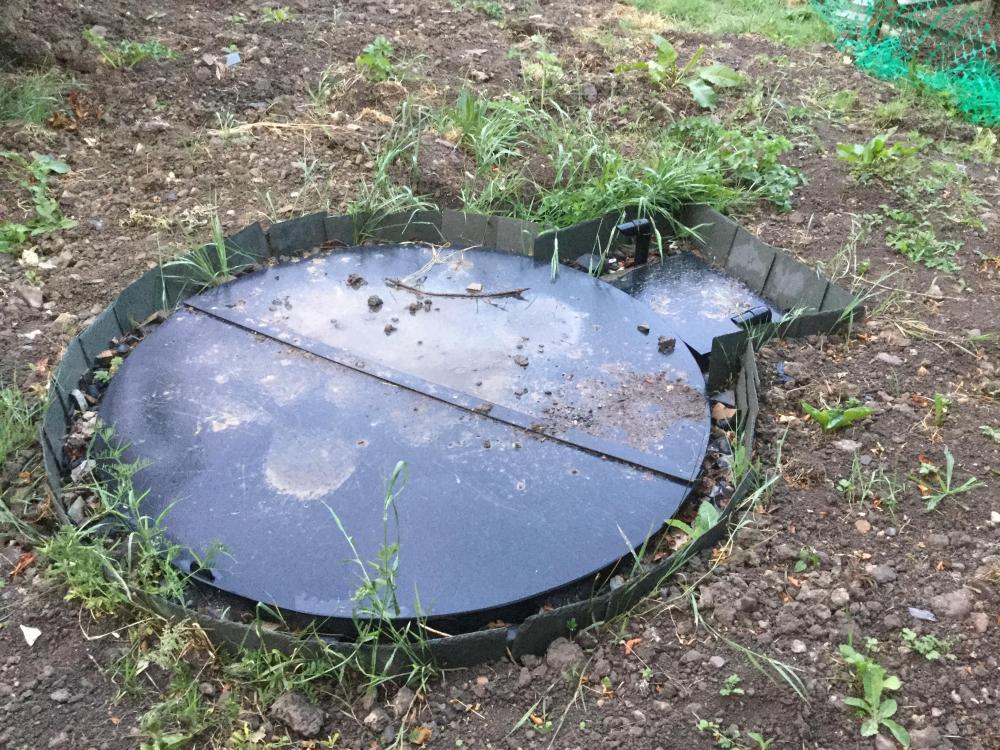Leaderboard
Popular Content
Showing content with the highest reputation on 02/02/22 in all areas
-
30p...absolutely...long term Electric costs are going to rise sharpish. Its one thing I could never understand on this forum, all the naysayers for PV couldn't make it work financially - that's true if you work under the mental assumption that prices would remain static. I always said they will inevitably rise so think holistically about long term implications. I never thought they'd rise this quick though - I'm at 19p per kWh - I reckon that will.be closer to 25p in a year or two. If Russia kick off then it will be 25p a lot quicker than anyone wants or thinks!3 points
-
I have to admit, that if any contractor I was considering for a job gave me the "take it or leave it" approach, it would be the last thing I listened to him tell me.3 points
-
+1. Try asking for a breakdown of the price of ingredients next time you go for a meal.2 points
-
https://www.tlc-direct.co.uk/Products/AP604.html?source=adwords&ad_position=&ad_id=415703895099&placement=&kw=&network=u&matchtype=&ad_type=&product_id=AP604&product_partition_id=940253951958&campaign=shopping_excluded&version=finalurl_v3&gclid=Cj0KCQiA9OiPBhCOARIsAI0y71ArWLXJnC5UG9qCepREVkqRQ1gXdxMpTUvr9fvfxLGHCuXlHzh7PWoaAojZEALw_wcB2 points
-
That would be if you were heating purely with resistance heating. Divide by the sCop to get the electric cost.2 points
-
Hello! This thread is linked from at least one prominent place, and after reading it (twice! Once over a few days, once again quickly) I feel it needs a proper conclusion. The main issue was that ~2018 vintage electrically-heated Sunamps would only begin charging once about 50% depleted, which led to two problems: • With charging provided by a single 3ish kW element, "charging" a unit back to full could take several hours, and if a unit was at say 51% at the start of a day, the rest of the charge could be used up leaving no hot water for some time • Charging units using diverted PV was difficult as the units wouldn't accept charge unless significantly depleted. However this issue was fixed in 2019 with new firmware in the controller, as explained in this post: This meant that electrically-heated Sunamps would begin to accept charge after only a small amount of discharge from full, meaning they play much more nicely with PV divert. (There's still a bit of an issue with night charging on cheap-rate electricity: balancing the risk off running out of hot water against leaving sufficient room for PV divert energy. I think @DamonHD and others are looking at that.) My personal opinion of Sunamps is that they are space-efficient and vastly simpler than fitting an unvented cylinder system when replacing a combi boiler, although using grid electricity to charge is much less energy-efficient than a heat pump charging a UVC: heat pumps invariably achieve a CoP of at least 2 when heating domestic hot water. The lower rate of heat loss from a Sunamp than from a UVC only partially offsets that difference. But a primary reason this thread was started to discuss has been addressed.2 points
-
Don't touch the flanges of the posi joists.. it's dangerous, a big safety risk and you could really trash your house..2 points
-
Since January 5th we have used 222kWh on the ASHP over the last 26 days. That's about 9kWh per day for heating and hot water. However some days the hot water temperature has been boosted by the PV excess power going into the immersion heater so let's assume 8kWh per day for 100m2 home. The heating is running 24 hours a day at an average of 20C. The outside temperature has been low (I will look up the records later) with only about 4 nights of frost. Results from trying different programmes seems to indicate that running the heating all night at about 2C lower than day temperature uses less energy than turning it off over night and letting the building drop lower and then reheating in the morning. Some mornings at 6am it is a lot colder than between 10pm and 4am and I think the ASHP has to work alot harder in a colder temperature a lot longer to enable the house to reach the required temperature. Interestingly, when we were out all day the system used even less power to maintain temperature even though we left it running. Another item that effects these results seems to be the amount of power used in the building almost regardless of the purpose of its use. I will start keeping a record of the whole house energy use to observe the results. Another is solar gain. Others are leaving doors open for extended periods of time, and body heat from things like housework. When we were leaving the heating off in the night I noticed that the north east bedroom became colder than the rest of the house. Having installed the insulation and vapour barrier myself I reason that this is due to wind chill as this is the most exposed part of the building. The ASHP Ambient Temperature probe registered 15.6C two mornings ago at about 9.30 in the morning although it was actually only about 6C. This caused the ASHP to lower its output temperature and the house was a degree or two lower. So I have shielded the probe against direct sunlight and this seems to be working.. The weather compensation mode in the ASHP control system relates the outside air temperature to the ASHP output, in an attempt to produce the minimum heat required to satisfy the temperature required in the building. Set up correctly this will lower the temperature of the ASHP output in line with a rising outside temperature and vice versa. In my opinion, the setting of the weather compensating levels would need to be adjusted for each individual property in order to have any chance of success. Because this bungalow can over heat when the outside temperature is above 10C I have adjusted the water temperatures down in the weather compensation control area. We have not tried out the cold settings yet as the weather has been mild. The coils in the mechanical ventilation heat recovery (MVHR) ducting work well in heating mode. The air from outside , at about 5C, goes through the heat exchanger ( raising the temp to about 19C, then along one of the main supply ducts and through the heated water coil (water circulated from the buffer tank), before splitting up into outlet ducts and entering the rooms at about 26C. The cooling opperation will have to wait until the summer to be tested. Having installed additional insulation around both the hot water tank and the Buffer tank the loss of heat greatly improved. The utility room is now at about 21C unless washing is going on. I am very glad we managed to keep all the tanks etc inside the building's thermal envelope and all the 28mm pipes with maximum pipe insulation. It may be this is long and boring but hopefully someone will read this before installing an ASHP and benefit from my experience. Good luck. M The best combination:1 point
-
Let’s be honest you aren’t going to give the new system a chance are you. that’s before any electricity price increase.1 point
-
Sounds like your new installers know what they're doing and are trying to give you an effective system with the lowest running costs. I know you're scarred by the last attempt, but go with it; it will be fine (can't be any worse, can it?).1 point
-
We have recently had quotes back for our self build for those that are interested. 250sqm house plus detached garage and we are coming in at around £1650 per sqm. That’s a good spec, ASHP, MVHR, well insulated and with a healthy 35k budget for the kitchen. Ours has some complex bits with 15k of steelwork, and 2 different ridge heights on roof meaning loose lay with about 3 weeks of joinery building the roof, which added to cost considerably. This is priced for a main local builder/ contractor and clean feet. Just in case this is of interest and this has been priced this week with 2022 prices for everything (which has pushed budget up considerably from last year when we did our budget).1 point
-
1 point
-
@zoothorn, wind your neck in and read @Nickfromwales contribution above, I have simply put a timer on the electrical feed into my ASHP. @ProDave will confirm how he did his.1 point
-
1 point
-
Thanks, like a lot of things when building a house it seemed like a big issue and a compromise at the time but it pales into insignificance with all the other stuff you end up dealing with.1 point
-
1 point
-
1 point
-
But if you’re struggling then why not do it yourself and then if in a year or two you really don’t like the finish you could find a plasterer to skim then when there isn’t a crazy shortage of trades.1 point
-
OK. The buffer tank is a hot water vessel, simply full of water, zero mechanical or moving parts NONE, ZILCH, NIL, NADA. Get the old noisy unit out of your head, keep it off this thread, WE HAVE MOVED ON!!! The most you will have where this buffer is, is a circulation pump and possibly a motorised 2 port zone valve, one near silent, one totally silent. Noise is NO LONGER an issue. Even if there is a defrost cycle, it will only involve the ASHP sucking warm water back out of the buffer, which will be no more audible than when it is in normal ( quiet ) heating mode. The new equipment is completely different to the original, the original being a split ASHP with a remote ( internal ) compressor unit ( which was your nemesis ), but the new unit is a monoblock with the compressor outside with it. EVERYTHING that makes noise IS OUTSIDE. This is the most amount of capital letters I have used in a single post since helping to start this forum, so.......read, digest, understand, move forwards. We herby set sail form new ( quieter ) waters. You can request, of the new installers, that the secondary ( buffer ) pump ( if there is to be one at the buffer ) is located elsewhere in your dwelling, eg away from the bedroom. IF you mention the old system and it's associated noises etc again, I am going to send the boys 'round to duff you up, ok We're moving forwards, away from the old shite. The management.1 point
-
Why should we do breakdowns though? We price as we feel necessary, if you don't like the price then just ask someone else. Like @Russell griffiths has said, there is more to think about in a job than just labour and materials.1 point
-
I have moved the thread to the MVHR forum. Sorry to hear your problems. I often wonder about our units, we have three and two are in lofts even though I didn't want them to be. At some point they will break and we will have to take the ceiling down to replace them. A couple of things spring to mind although they don't really help to get things fixed. Firstly, I mentioned this on another MVHR thread, I turned off the humidity boost function on mine as I found that whenever the humidity rose due to rain etc it kicked in and it was n boost way too much. I switched them all to running constantly at the slowest speed. This hopefully puts less wear on the system. Secondly, I find it very odd that you have condensation dripping from both sets of ducts. Presumably you have extracts connected to bathrooms and kitchen and supply ducts connected to other rooms. Why would the supply ducts drip? This is just the same as all the other air in the house, I don't see why it should be condensing any more than any other air in the loft. Hopefully when you get if fixed you can change the filters yourself. It seems like access is pretty easy and it should just take a few minutes if you can get to the units. Paying £300 a time would really upset me. Watching the video again a couple of things spring to mind to check. Could there be a problem with the condensate drain. If this is set up correctly surely it should catch all the condensation inside the unit and it should not get wet. Could the unit be sloped so water is gathering at the other end from the drain or the drain be blocked. Maybe it is blocked internally as it seems only wet on one side. One of our units didn't have the drain fitted initially and it started to create a wet patch in the ceiling in days. I think quite a lot of water condenses inside the units. If it cannot drain away would the whole system just keep getting wetter. Similarly could water be getting into the exhaust or air inlet where they go out through the roof.1 point
-
10,000kWh after April will cost you about £3K per year. A LOT of people are going to have a shock at the train wreck that is coming our way. It has never been more important with a new build to insulate, insulate and then insulate a bit more, making it air tight as you go,1 point
-
By way of comparison, our ASHP uses just over 1000kWh per year of electricity for DHW heating. So your figure sounds high. I wonder how many people they are basing that on? Granted, in the summer surplus PV does a lot of the DHW heating.1 point
-
@gravelrash are you mistaking day rate of a tradesman to the price a company would charge. If you get 2-3 guys at£200 a day who is supplying the warranty. As a company I supplied labour and made 60% for the company and 40% went out in labour, so for instance a £100 job would entail £40 labour and£60 for the company to cover everything, pensions, insurance, trucks, tools, fuel. Everything. So looking at your job 6 guys for a week at £1000 each wages plus £9000 for the company comes in at £15000 labour. Not saying anything about your job, but that’s how I priced things.1 point
-
I think as a finished oak door there is not much hope for it. At the risk of offending @willbish, would there be any mileage in perhaps filling, sanding and painting part of the door and frame? I would still expect a refund of at least 75%. The joiner could either accept this or arrange a full refund or replacement, which, on the basis of the door you have, would probably not be up to standard either.1 point
-
I did not at first recognise your picture of a flattened woodland. (looked like foreground to the picture above it). I never thought of Angus as a windy area. Good luck with your repairs. Not easy at that height, and probably needs a replacement ridge section for aesthetics and because the protective coatings will be damaged.1 point
-
Another case of people think they own everything they can see. Alas they made it clear “business is business” when they objected to your planning. None the less, they’ve come back to the table in a reasonable manner.All you need to do is think of a price. You can’t loose really.1 point
-
I don't know the full story (apologies if it is on a different thread) and it appears you are frustrated with your neighbours for previous actions, some of which may be fully justified. My only advice would be, don't cut your nose off to spite your face - neighbours can cause significant issues both during the build and whilst you're living there - I know I could do without that added stress. Maybe a 30 min conversation is worthwhile even if you end up with the same outcome as now - nothing to lose?1 point
-
If there is no sun our Sunamp charges overnight on the Octopus ‘Go’ tariff which is 5p/kW. We do not have an ASHP or boiler, just the Sunamp. The Sunamp provides DHW (not heating) for a household of 4 taking 4-6 showers a day, the bath is rarely used. It has always charged up in the 4hr cheap tariff window, normally taking around 3hrs. It’ll charge from PV if the sun is out and it will start charging after minimal discharge. We have never run out of hot water. It cost us £1500 and despite our one little hiccough with it I think it’s an absolute bargain and brilliant.1 point
-
Midnight to midnight eg 24/7/365. 30p? It's most definitely where the consumer market is heading for the purchase price of domestic electricity. Sadly, in 3-5 years we'll likely be north of 35p/unit, or above. Look at fuel prices at the pump.....they push, we smile ( through helpless gritted teeth ), and just pay. Pending huge costs for improvements and fortification of the grid has to come from somewhere, and guess where that cost will be pointed at? Elderly and poorer folk look out. Solar PV.........."Fail to prepare, prepare to fail". We all use electricity in considerable quantities, we all have roofs. Most are suitable for the installation of at least 1kWp of self fit ( via electrician ) PV which will serve us well whilst we are in work paying for the rest of what we use. Calculate the vampire / daytime base-loads that are happening whilst the house is vacated each day, and aim for that as a minimum. Remember that an electrician can assist you in DIY'ing a grid-tied PV system, but without MCS accreditation you CANNOT claim the export payments of ~5.2p/unit . If just installing enough to cover base loads, then no need for MCS as you would be pretty much a self-consumer and theres nothing stopping you diverting any excess into an immersion heater to bolster DHW etc ergo you would not care about not getting the export payments and can then save on any unnecessary elevations to the capital cost of such an installation. DIY all the way then!! Regarding A/C batteries? Deffo. People who already have larger sized ( 7.2kWh and above ) grid-hungry A/C coupled batteries will literally be disconnecting them when they become faced with no cheap rate overnight grid power to make up the winter deficit. Options then would be to manually 'tend to their winter needs' by maintaining the state of charge and cycling simply to preserve the cell life for those generation shy periods of the year. They still make sense inn summer, but winter is about to get extra chilly in the respects of A/C storage ( essentially named so as it is supposed to store excess and not be fed from the grid, due to the then nonsensical economics of cost vs lifespan and losses of throughput ). Solar PV revenue is around 25-30% max over the depths of winter, and we're already not in the sunniest country in the world to start with, so prepare yourselves for this flat rate AFAIC. Assuming batteries will charge from anything other than grid during winter, especially for retiree's / folk who work from home eg savvy users with larger self-consumption figures, there will be zip left to go into them. D/C will be the way forward then, and I am awaiting Solarwatt to return their D/C offering back to the domestic market, new and improved, before I then invest myself ( as they are rated and guaranteed to 'hiberante at their lowest DoD for long periods of time ). PV on mine next year hopefully, batteries to follow as and when. We digress...... anyways......when has that ever stopped us Then go for that after the dust has settled. Install enough to cover the daily base loads, as I describe above, and then at least you remove the daily grind from your electricity usage with minimum capital expenditure. A colleague installed 4x 250w second hand panels on his roof, and I was seriously impressed with what they were chucking out each day. Really put a dent in his daily import.1 point
-
1 point
-
1 point
-
I did want to do it, but unfortunately we had major issues with the roof getting fitted and generally the workmanship from the suppliers subcontract team - which basically burnt all my time at the point. I'd worked out at that point (I was around 65/m2 for supply and fit of slates) that it might only cost me £1000 but there was too much going on and I didn't have the time to work out what needed done, coordinate it with the roofers and get it sorted. The only option was to hand it to a company to do - but they wanted north of 8k to supply and fit panels and I knew I could get them supplied for £2.5k. All a shame really. I don't think I could fathom ripping the slates up just now - just so hard to plan and redo. Boxing the beam and good attention to airtightness all planned, the point around doing ceilings only might lessen the blow and be a good shout.1 point
-
See @pocster it works! You know nothing troglodike!1 point
-
Did that to part heat my parents swimming pool. It worked reasonably well. That was nearly 40 years ago and what started to get me interested in the RE business.1 point
-
Like @joe90 I know my limits and precision joinery is not on the list. I paid a trusted joiner to do my Oak kitchen worktop and hang my upstairs doors. Unfortunately I could not get hold of him for the downstairs doors so I hung them myself. Even though my joinery is not perfect, it is a damn sight better than this door, just by doing things slowly and carefully. Best of luck getting it resolved.1 point
-
1 point
-
Also if I ever get asked for a breakdown of costs I tell them to take it or leave it. I don't need to justify prices to anyone. You either like it or don't.1 point
-
Check your deeds - there may be provision for repairs I'd imagine that should be possible under the Party Wall Act, if you can get planning permission.1 point
-
I get the emotional desire to do more, but you'd never recoup that outlay in actual cost savings, even 20 years of living there! Insulation is a law of diminishing returns.... Your U values already put you into the top 1% of housing stock I'd bet. They are very good as is. Be very very sure there isn't a more tangible use for that money, one that reflects actual material benefit to you....solar panels? Mature tree planting? Quiet & covered seating area in the garden etc etc?1 point
-
Do it! It can't be done once you're in. The way we look at it on ours is that figures like that challenge our budget, but we aim to be there a long time and would rather leave rooms like en-suites unfinished. We've insulated over our timber frame with a complete layer of wood fibre and it is fantastically reassuring knowing there's very little in the way of cold bridging ?1 point
-
You're telling me. Our firm are working on the strategy paper with SGN to come up with a solution!1 point
-
Suck it up and get it done bud. I put 70mm on my walls and 75mm on the Ceilings just to get the 0.11 figures quoted by Kingspan Tek for SIP. Electric is only going to get higher. If you're in this house for good, what will the Unit price of electric be in 30/40yrs time vs your outlay now? I also put the insulation inside as it will cover the studs/thick timbers within the wall and therefore reduce the bridging at these areas.1 point
-
I dropped out of running my business in Australia 10 years ago and purchased a run down property in the middle of nowhere…. I work away for two solid months of the year and make the rest of my income from renting out accommodation to visitors. I need to get another building finished and available to rent before I am of the breadline but the quality of life is excellent, I wake up and the day is mine, everything i do is about maintaining or improving the property I live on, if I work hard my goals get closer, if i work less then it’s more relaxing. It’s a good life and I hope I never have to go back to working 9-5.1 point
-
The requirements are derived from the Caravans Act. Internal max height of 3.048m, width of 6m, length of 18m. Can optionally be split in to no more than two sections. It's not a magic bullet. You can't use a raft foundation so you end up with long spans and expensive joists. I built a hefty ring beam as a sort of chassis, instead of a simple wall plate. Financially, you can't get a mortgage on a portable building, nor will you get your VAT back. So you may not make the savings you envisage. But it worked for me. I avoided the need for the building warrant and its fees and drawings. I could also deviate better and there from the regulations, although I chose to follow them in almost every aspect as most of them are there for a good reason. I wasn't going to get my VAT back anyway, and I wasn't securing a loan against it.1 point
-
All I will say is the Passivhaus Trust mvhr install guidance says "MVHR must not be run until post construction cleaning has been completed and commissioning of the system is to be undertaken."1 point
-
1 point
-
Oh no they won't. They'll drop it right next to one of their feet. Tread on it, trip over it repeatedly, fall over it , grind it into the ground, look at it while drinking tea. They won't give a flying fookety fook about it. Not one. Not even half a one. (PS, Written with feeling - can you tell - , not to say annoyance, #ucking lazy bastards)1 point
-
Hi. best practice is to aim for minimum of 1:40 in construction, to achieve 1:80 in reality. to work out what 1:80 needs to be take the run (length of the roof) and divide by 80. 2310/80 = 29mm1 point
-
I went for the vortex in the end, the pump and controller came in a box to be fixed to the lid but it was sooo noisy as the lid acted as a drum. I moved the box into a hole in the ground next to the tank with a stone drain down to the rumble drain so it would not get flooded out. It’s whisper quiet now and less obtrusive being below ground level.1 point






